Visit to the Konso King
Tuesday, October 23, 2012
 Konso, And People's Region, Ethiopia
Konso, And People's Region, Ethiopia
We had oatmeal again this morning . I had discovered that I liked the oatmeal last time we had it. Of course I put in a heavy dose of Ethiopian honey and that made it good I think, but now I am thinking I could even eat oatmeal at home. Anyway, after a cold shower of sorts and getting all my things packed up after the 3 days of camping, I had breakfast at our usual 7:30. We were pretty much ready to leave by 8 am.
We crossed the river bed and headed in the direction of the Hamer bull jumping ceremony. Not too long after we started out, one of the jeeps had a problem and we had to load all the stuff and people from #3 into the other cars. That meant Martina, Doris and I - who had extra space since Andrew had left us to go on to do his research for next year's photo trip - had to make room for Barbara & Sue. Poor Sue ended up sitting in the front middle almost on the gear shift. Later Barbara switched with her. But we managed.
We drove through more dry, scrubby land but then we began to enter a more mountainous landscape - still dry, but with mountains surrounding the plain . I was quite excited by the periwinkle blue of the mountains in the haze. There were the periwinkle mountains and some baby blue ones on the other side too. Martina and I looked at the vegetation to see what was interesting but it was pretty dull for awhile.
We stopped at an Arbore village and had a short tour including the inside of one of the huts. There was an animal in one alcove but I didn't see it - there were several people inside including a woman with a baby. We could see the cooking area with a fire pit. Then we went out into the fray. I took some photos of 2 old ladies who desperately wanted their photos taken. Adults were 3; children, 2; and babies, 1 birr. I took photos of some women with babies and then there were 2 older men who were quite photogenic. One man was quite tall and wore glasses. You don't see that many glasses on people in the tribal villages...and except for the bull jumping, we didn't always see that many men in villages. People were getting very insistent and wearying. I went to stand near a tree to get away from them, but it wasn't easy. Sometimes we all wished to leave sooner than we did in order to escape the harassment. I wonder if they feel as harassed by us tourists taking photos as we feel harassed by them wanting their photos taken and the accompanying payment.
I think we had lunch in some small village before the landscape changed . Our chef made our lunch and we got drinks from the local hotel. It is an interesting arrangement where we can stop at a hotel and the chef puts out our lunch, but it seems to work. Some children and other people came round to sell the little stools and necklaces. Some of our group seem to be acquiring a number of these stools.
We then began to go through some really beautiful mountainous areas. There were lots of terraced fields with women carrying huge bundles of firewood and long grasses. There were also the usual herds of cattle and goats with children yelling greetings and shouting for "highland" - which was the name brand of local bottled water, so now it stood for the water bottles themselves that will be used to hold various things instead of the calabashes they used to use. The kids want the plastic bottles, or caramels, or pencils, or money,..... We began to pass the Konso women with the wonderful layered striped skirts. I was then sitting in front with Barbara as she took zillions of photos . I think I had my zoom lens in the Nikon and the Lumix so I really couldn't take decent photos from the speeding car. I was a bit jealous because she was getting such good shots. Oh, well.
We arrived at our basic hotel - the Green Hotel in Konso - and had a half hour "rest" and then went off to a Konso village with a local Konso guide. It was a beautiful village up high on a hill with a fantastic view of the valley below. They have some special beehive huts. The local guide took us for a walk to see the wakas - the memorials to the old chiefs. When the chief dies, the body is mummified by taking out the internal organs and drying the body. It is kept in the house for 9 years, 9 months, 9 days, 9 hours and 9 minutes and then buried and a waka is placed over the burial spot. It has eggshell eyes and a phallic symbol on the wood carving. We saw a queen in one spot and then another spot with 2 chiefs and near it another one or two more wakas. I took photos but it was rather dark . On the way were some purple spiky flowers and a shrub with flowers like hydrangea.
In a grassy area outside the village there was a huge limon (or something like that) tree with bee hives. There were also generation poles that represent 18 years. I couldn't quite figure out when they were erected but you supposedly could tell the age of a village by adding up the number of poles and multiplying by 18. At least one of the poles was from a juniper tree. At this elevation, we had begun to see some conifer trees. There was a fence made of tree branches around the complex. It looked like a Hobbit village - all twisted branches and the houses with ceramic pots on top of the thatch to keep out the rain.
When we entered the village gate, we were introduced to the King. The Konso have 9 clans that are all intermingled and total around 300,000 people. Each clan has a king but this king told us he was king of all the Konso . It is a hereditary office and his chief responsibility is conflict resolution. He talked to us for quite awhile describing his people and what he does. He is a university graduate and a civil engineer by profession. His father died at 60 so he became king quite early. He has a 10-year-old son and is beginning to introduce him to the office. The king told us how his grandfather and father had trained him. Early on he was given the opportunity to resolve conflicts but if he didn't pay enough attention and gave an unsatisfactory response, he would be punished. It was great to listen to him and we got a much better idea of his tribe than any of the others. His also sounds a lot more sophisticated. Our folks started getting restless after awhile and Kibrom very nicely offered to let the king get on with his duties. We stayed around trying to take more photos of the compound, but sadly we didn't really get to see much of it. And we didn't get to meet any others from the village, except for a few who were outside the compound .
Amidst all of our touristing, I do think sometimes about how we interact with local Ethiopians and how we find out about people here and the culture. It is definitely a positive feature of the tour that we have Kibrom as our guide. He is Ethiopian and very well-versed in Ethiopian culture, economics and politics. We also have our local drivers but it is harder to connect with them beyond superficially because not all of them speak much English, but I think they probably understand quite a bit. And maybe I am less skilled in relating. We have a little contact with people who normally come into contact with tourists - restaurant and hotel staff, vendors, etc. There was one young man who we met on the street and he had very definite opinions and seemed very well thoughtful too but that was a less common type of encounter.
Our contact with the tribal peoples has been pretty limited. We do a tour of the village, then take photos of those people wanting them . In the Dorse village, the tour was organized around the weaving and false banana preparation. I liked that the best. Here at the Konso Village, we got to meet the chief and he was extremely articulate and very impressive. In all the other villages, my impressions were pretty much overwhelmed by the photo business - partly my fault, because I couldn't let go of that agenda. I certainly don't have any answers, but I think that this photo business has taken a wrong turn. I think the superficiality of the encounter (because it is such a short, focused one) ends up making both parties feel somewhat exploited when there should be a more mutually worked-out exchange somehow. Enough thinking now....
The other group of people that we encounter are the would-be guides - typically young men who attach themselves to us tourists and offer information and other help. I have found myself a bit irritated that I have been pursued by them because they expect payment - although they don't offer their services for a fee. You only find out afterward. But then you do know. Some of these fellows have been very pleasant and have imparted a lot of interesting information. In retrospect, I feel that it would be a good thing to take advantage of their offers sometimes. You could find out more about their lives and what it is like to live in Ethiopia maybe - in exchange for a small amount of money. It is not really a rip-off - it can be a worthwhile exchange. I wonder if they would be prepared to talk about their personal lives instead of the local tourist site??
We then returned to the Green Hotel. Jillie and I chatted about cameras and stuff until dinner was ready at 7:30. Our day is circumscribed by 7:30's. We heard some reggae music - here in the land of Rastafari. Now there is Ethiopian pop music playing quite loudly but I am enjoying it for the moment. Maybe I will try to upload some photos from today now.
Other Entries

 Konso, And People's Region, Ethiopia
Konso, And People's Region, Ethiopia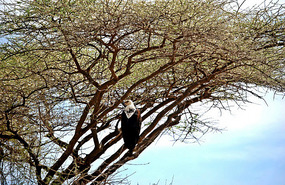
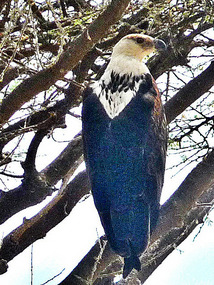
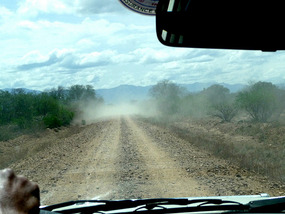
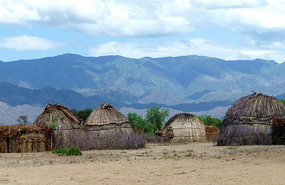
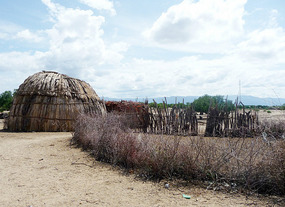
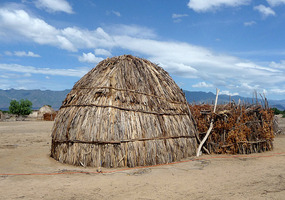
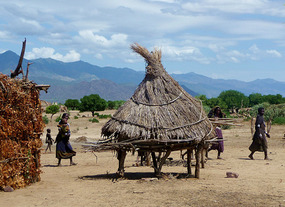
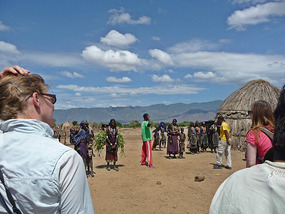

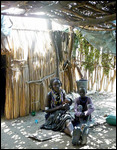

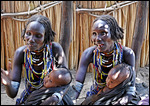
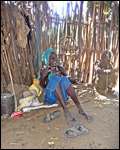

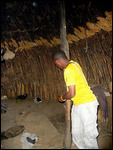
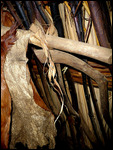



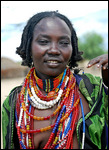
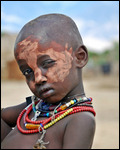
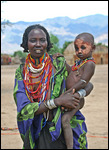

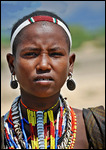
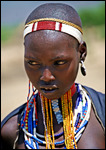

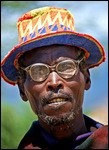
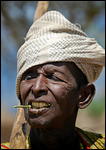
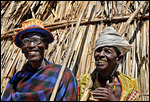

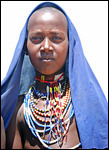






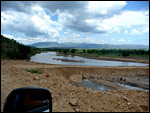
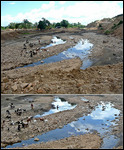
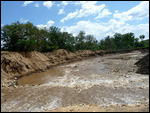


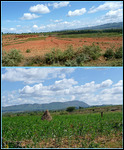

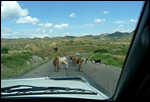
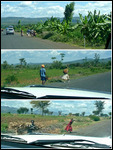

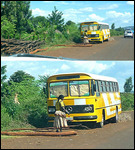
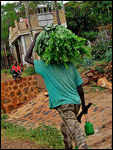

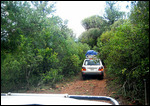
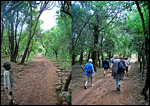

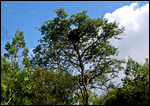


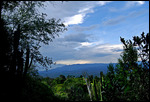
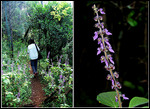

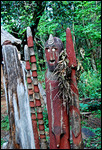



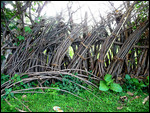


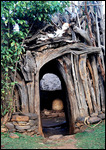


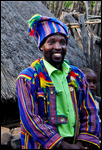

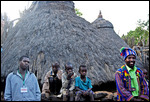
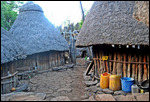
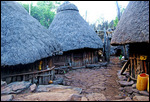
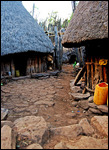



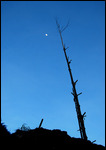
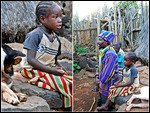

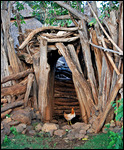


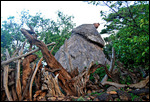

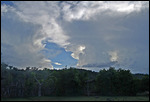
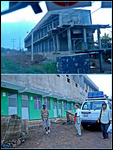
2025-05-23